The key to a thriving business is meeting the needs of all your potential customers. This means keeping in mind accessibility best practices so you can cater to your full audience. In fact, one in four Americans live with a disability—that’s about 61 million people!
Odds are, potential customers may be looking for your business online but require additional accessibility options to truly get the full picture of your brand. The last thing you want is to put hard work into a business website only for nearly a quarter of your audience to be unable to use it! Instead, use this website accessibility checklist to make all your customers feel at home with your brand.
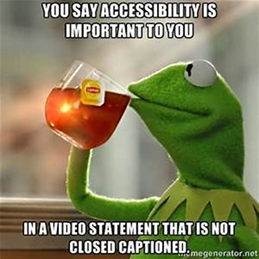
When it comes to website accessibility, don’t just “talk the talk.” Be sure your business shows it truly “walks the walk” by using a website accessibility checklist!
What does website accessibility mean?
The accessibility of your small business website can make or break both the customer experience and your online reputation. It means your site follows the Web Content Accessibility Guidelines (WCAG).
Website accessibility indicates that everything within your site is designed with people with disabilities in mind. In other words, site items like navigation, tools, products, creative assets, and more are developed to fit the needs of those with physical, cognitive, visual, auditory, or speech impairments.
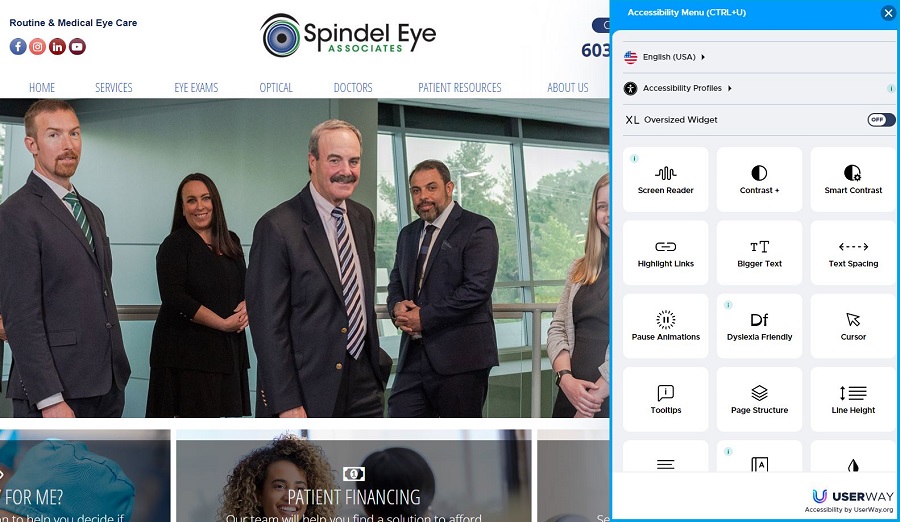
An example of the accessibility menu on a small business website.
Related: Your website isn’t the only marketing channel that you should make accessible for all. Learn how to make your social media accessible and inclusive, too!
Why is website accessibility important?
Not only is maintaining website accessibility the right thing to do, but it also is a requirement for your business’s site that’s regulated by the WCAG and Americans with Disabilities Act (ADA). In fact, there were over 2,500 ADA website accessibility lawsuits filed in federal courts within just the past few years.
While you definitely don’t want any legal trouble on your hands, it’s also important to keep in mind that website accessibility provides a better customer experience to your audience. Here are a few other eye-opening statistics about the importance of website accessibility:

- 62% of adults with a disability own a laptop or desktop computer, and 72% own a smartphone.
- People with disabilities, along with their families, friends, advocates, and caretakers, are estimated to hold over $13 trillion in annual disposable income worldwide.
- Website accessibility can help your business stand out from your competition, as there was a reported average of 51 accessibility errors per website home page just this past year. While your competitors may be providing a poor experience on their site, you can win customers over by abiding by our website accessibility checklist!
- Almost 40% of customers call out a high level of accessibility as a reason behind their purchase with a business.
- Digital assets that are in full WCAG Level2 compliance are estimated to outperform their competitors by 50% in 2023.
It’s clear that website accessibility isn’t a nice-to-have feature on your small business website, it’s a need-to-have!
The ultimate website accessibility checklist
Use this website accessibility checklist to expand your inclusive marketing strategy:

1. High-quality alt-text on images
A picture might be worth a thousand words, but image alt-text is priceless to your website visitors with vision impairments! Alt-text describes any picture on your website for those who might not be able to view it, so you’ll want it to be descriptive as possible.
Meaningful alt-text provides context to a picture by showcasing not only what the image is of but also the purpose behind it. For example, instead of just putting “website grade” as the alt-text of this image below, you’d want to apply something more thoughtful, like “LocaliQ website grader tool report example.”
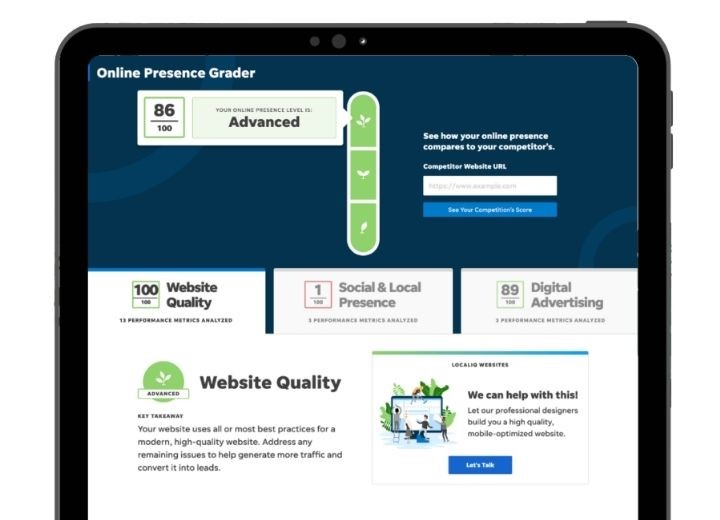
Our free website grader tool can help you optimize your website’s user experience.
2. Captions in video content
An inclusive video marketing strategy is a strong video marketing strategy! Be sure your video content is accessible to all—including those with hearing impairments. This is more important than you might think, as nearly 5 million people worldwide have a hearing disability and need captions in order to fully watch a video.
Clear and accurate captions on all your videos are a must to get your main message across to all viewers—regardless of whether or not the volume is up. To save time, you could weave AI marketing tools into this website accessibility checklist must-have. That way, you’d use machine learning to curate your captions for you. However, manually inputting your script into text boxes at the bottom or top of your video screens can be just as effective.

An example of a website that uses closed captions on videos.
3. Flexible color schemes
Did you know there are 300 million colorblind people worldwide? That’s about 8% of all men and nearly 1% of all women in the world! With that, comes the need for your website to have color schemes that can accommodate your customers’ varying visual abilities.
There are certain hues, like shades of red, green, or blue, that could come off as confusing to some. Try using a color scheme that can flex around these colors so that you can easily swap out for high-contrast hues as needed.
Also, since using those colors can be unavoidable at times, be sure your messages can be conveyed without relying on colors.

An example of a website with high color contrast.
4. Keyboard-friendly browsing
You don’t want the only way to get around on your site to be through a mouse. Be sure your website is fit to navigate with keyboard controls. The best way to test this? Try browsing your website with just a keyboard yourself! That way, you can find any keyboard traps, unclickable elements, or illogical navigation steps before your customers do.

An example of how a keyboard might be programmed to navigate your business’s website.
5. Avoid flashy designs
Flashes, strobe light effects, fast-moving features, and more can all be triggering creative elements for those with impairments. While you want to catch your audience’s eye, you don’t want to do it in such an intrusive way that it interferes with their experience.
If you have flashing elements, provide the option to pause or enable them. Otherwise, it’s best to stay away from any creative asset that could be difficult to view for those with disability or sensitivity issues.

This website offers users the ability to pause or adjust the video on the homepage as needed.
6. Add an auto-fill option for forms
Not only does this item on our website accessibility checklist help you drive leads, but it also ensures your buyers’ journey is a universally welcoming environment throughout.
Whether you’re looking to get website visitors to sign up for an email newsletter, complete a purchase, RSVP to an event, or anything in between, you’ll want it to be as easy as possible to do so. Investing a bit of marketing budget into tools that can provide a way to auto-fill data for your customers is well worth it.
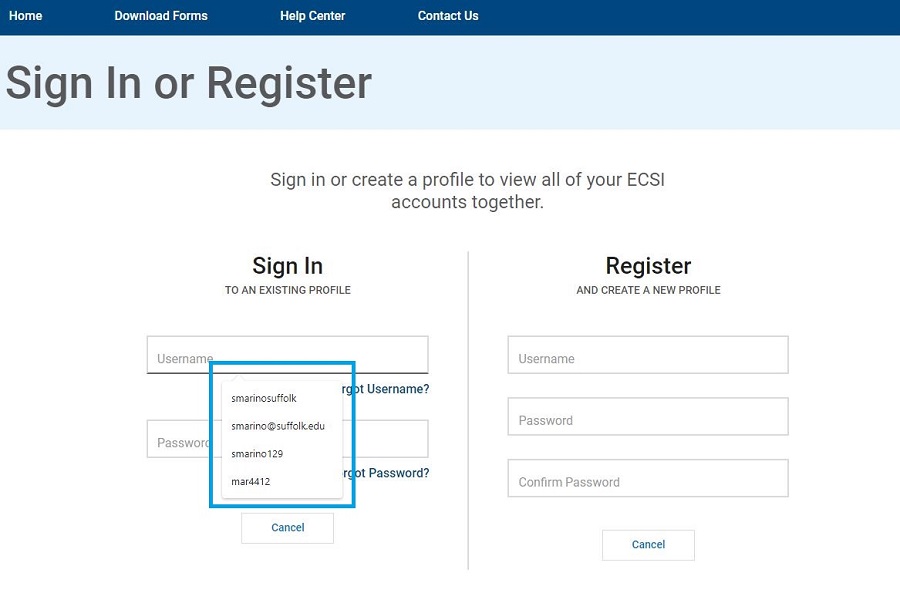
7. Give additional options when users make mistakes
Nobody’s perfect, so your website visitors will be bound to make mistakes here and there when navigating your website. If users get stuck on an issue or obstacle within your site, that could cause them to get frustrated and ultimately leave your page. To avoid this, have prompts set up for when someone might make a mistake.
For example, if they get locked out of their account, you could offer an additional way to verify their login information. Or, if they accidentally make the wrong purchase or add the incorrect item to their cart, have a live chatbot on standby to jump in and assist them.
Related: Want to add live chat to your website but don’t know where to start? Our live chat solutions are here to help.
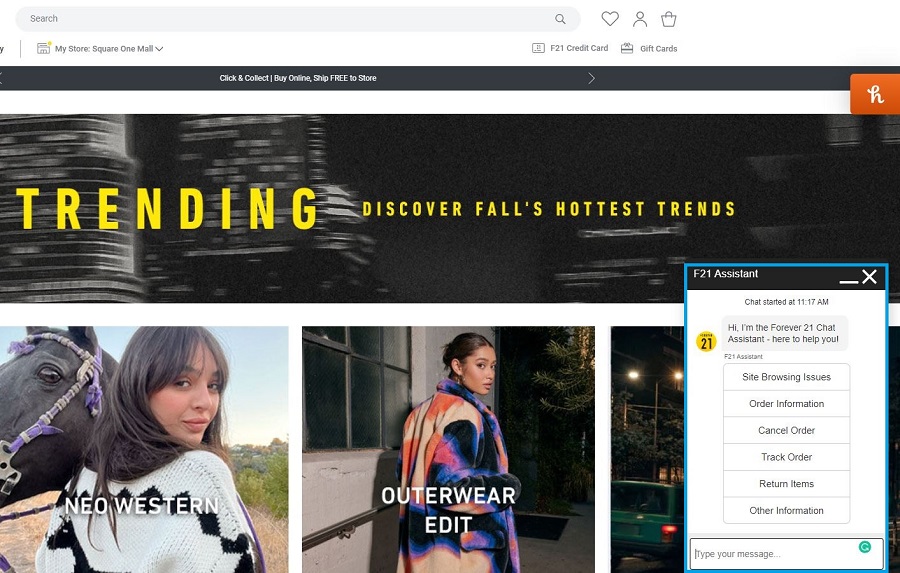
8. Easy-to-identify links
When you link to a different page on your business’s website, there’s likely a reason why you’d like users to click on it. Whether it be to learn more about a product, contact your business, or anything in-between, be sure the purposes behind your links are clearly defined to viewers.
The last thing you want to do is lead users to a page they don’t want to land on or don’t know how to navigate back out of. Stop this website accessibility mistake in its tracks by ensuring all your links are descriptive and clear on the intent of their use. For example, instead of just linking your product landing page as “click here,” you could have the link say “learn more about our product.”

9. Descriptive section headings
People with varying website accessibility settings may not always ingest your content in its stylized form. For example, separate headings may be clear to someone who’s looking at the different font formats on your page, but certain viewers may only have the plain-text version available to them. That means that it may be hard for these individuals to know when your page has moved on to an additional, separate section.
Make your section headings clear by using descriptive language to separate out your blurbs of content. This will ensure your page structure is still easy to understand when there are no styles enabled.
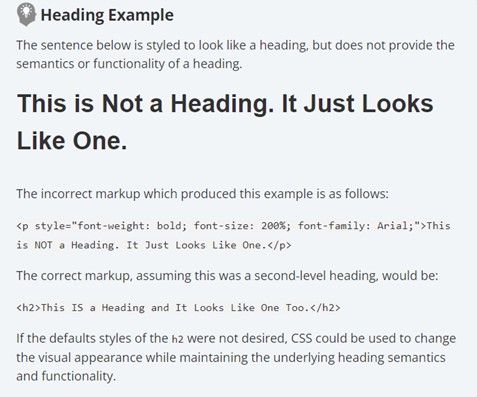
10. High contrast between text and other elements
Your website’s text is the most important element on your pages because it pulls together the story your brand is trying to tell. You want that text to pop and be easy to read—even in situations where your viewer has a dimmed screen, is colorblind, or is dealing with other varied abilities. While it can be fun to play around with your brand colors, you’ll usually want to stick to having your text either be black or white depending on your background.
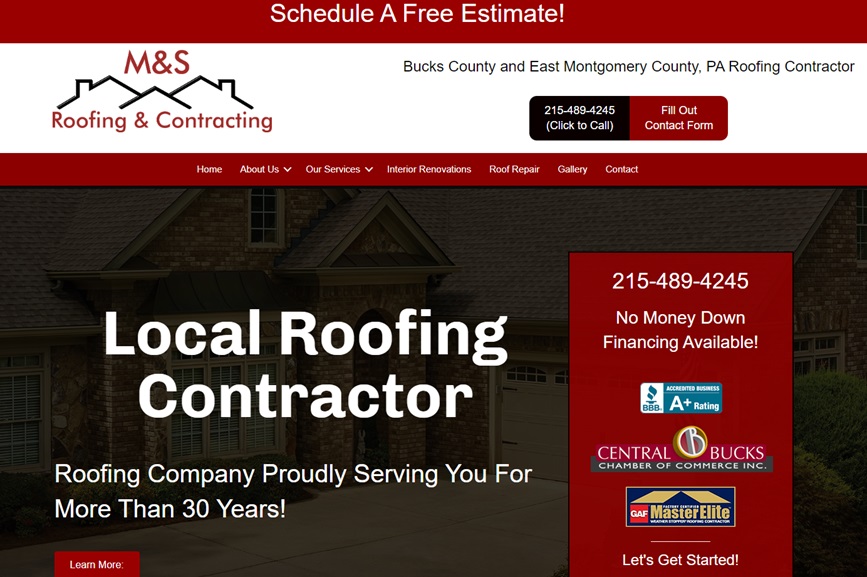
An example of high-contrast text colors on a small business website.
11. Make your website elements predictable
When you’re driving through a neighborhood you know well, you don’t have to think too much about where to go next. You’ll want your website visitors to have a similar experience on your website.
In other words, people should be able to guess what happens next after they click on a link, video, button, or other assets. This will help visitors avoid any confusion, fatigue, or frustration when trying to interact with your site.
When users are able to intuitively jump from page to page with ease you’re also more likely to hit the SEO metrics you need for success, like time on site.
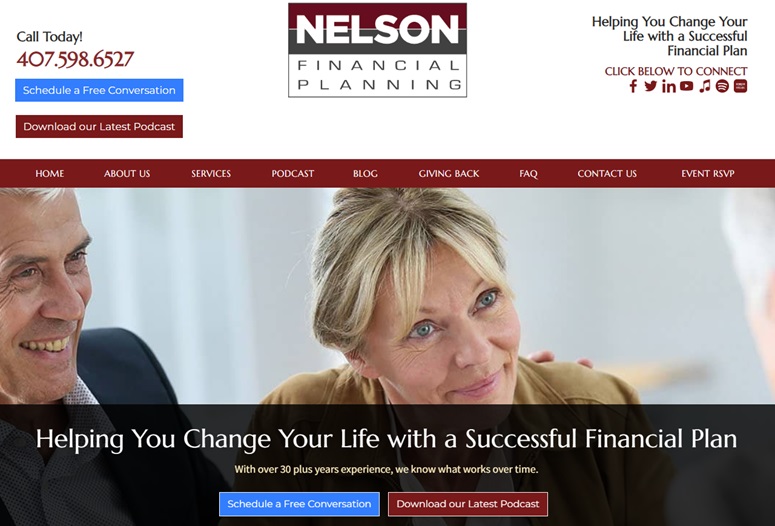
This small business website gives clear direction for each possible action on the site.
12. Use thoughtful and inclusive language
When it comes to the messaging your brand conveys on your website, words matter. Avoiding any language that’s insensitive or hard to understand is at the core of any inclusive marketing strategy.
Additionally, you’ll want your website copy to be easy to understand for folks from all different types of backgrounds. Try avoiding industry-specific jargon or overly complex explanations to make your business’s website appear more friendly and welcoming for all.

This small business’s website copy is simple so that people who may not be familiar with professional pest control terms can still understand what the business does.
13. Avoid spelling and grammatical errors
While keeping your site content clear of spelling and grammatical errors is a general marketing best practice, it can also make or break your website accessibility strategy.
That’s because some of your visitors may have learning disabilities, like dyslexia, that make it difficult to differentiate text characters—even when correctly displayed. Layering spelling and grammar errors on top of those impairments could make reading your content feel nearly impossible.
Taking an extra couple of minutes to review your website copy for clarity and correctness can make all the difference to your users. It also doesn’t hurt to try free tools, like Grammarly, to check your spelling and grammar automatically.
If you don’t have time to tediously check your website for spelling and grammar errors, try investing in a marketing partner to get the job done without adding an extra headache to your to-do list.

An example of a site that is free of copy errors.
14. Keep your web page size small
This may be the last tip on our website accessibility checklist, but it’s certainly not the least important. While over 5 billion people worldwide have internet access, not everyone has the same level of equipment or resources for high-speed browsing.
Be sure your pages are quick and easy to load regardless of whether someone is viewing your site on a shared wi-Fi network, an older device setup, or anything in between. This means your web pages should stay under 500k to ensure users with slower bandwidths are able to access your site.
Try free or low-cost page speed testers, like this example below, to ensure your site is up to par.

Related: Need help putting these 14 checklist items into action? Here’s an accessibility audit checklist template you can use and customize to your needs.
Leverage this website accessibility checklist to meet all your customers’ needs
Using a website accessibility checklist plays a key part in embracing inclusion and diversity in your marketing. Taking an active role in meeting your customers’ needs shows you truly care about their experience with your business online.
If you’re not a website accessibility pro, don’t worry! We have experts here to help your business succeed in website accessibility and beyond.
To recap, here are our top 14 items for your website accessibility checklist:
- High-quality alt-text on images
- Captions in video content
- Flexible color schemes
- Keyboard-friendly browsing
- Avoid flashy designs
- Add auto-fill for forms
- Easy-to-identify links
- Descriptive section headings
- No spelling or grammatical errors
- Give additional options when users make mistakes
- Make your website elements predictable
- Use thoughtful and inclusive language
- High-contrast text
- Small web page size






